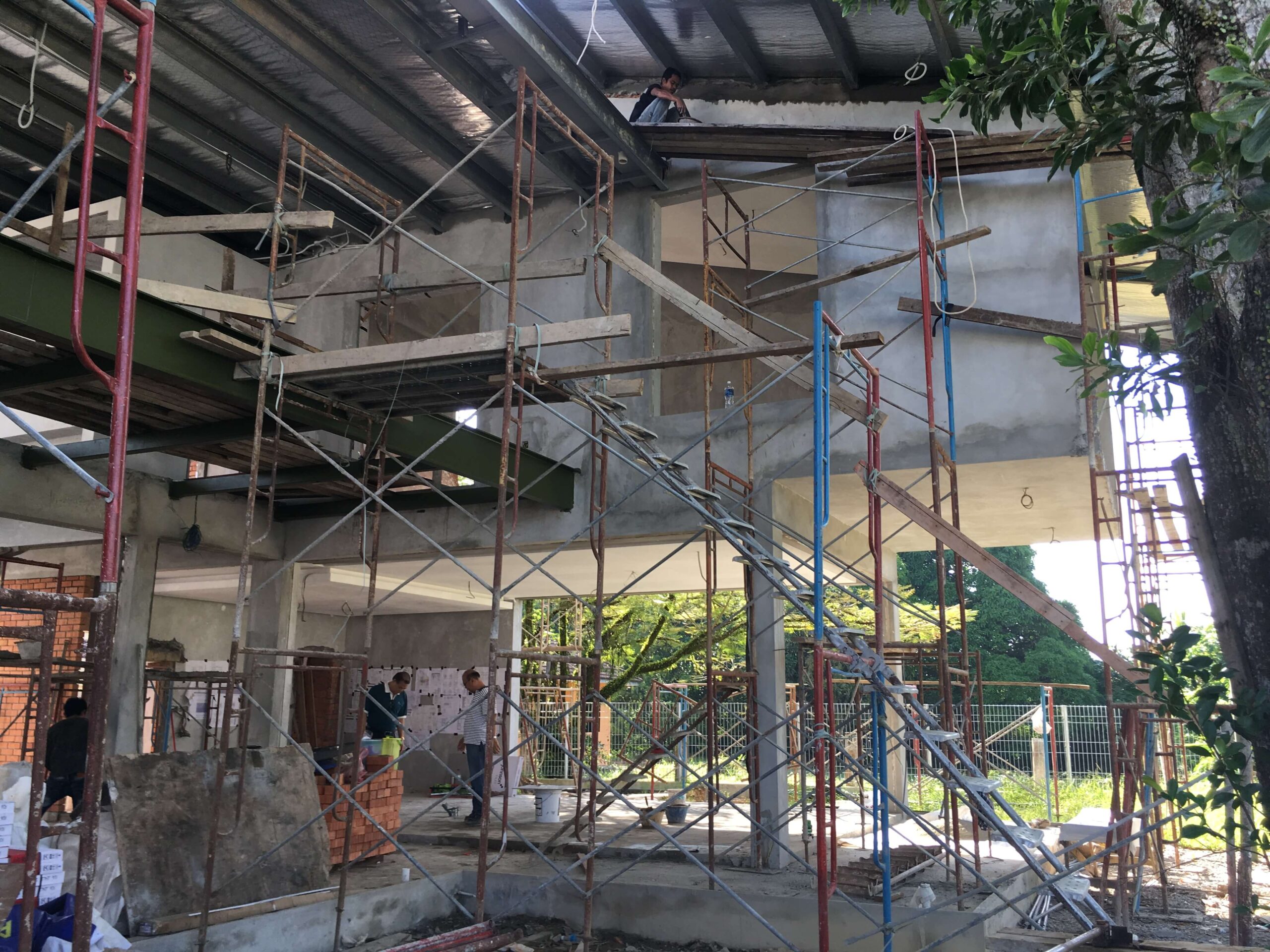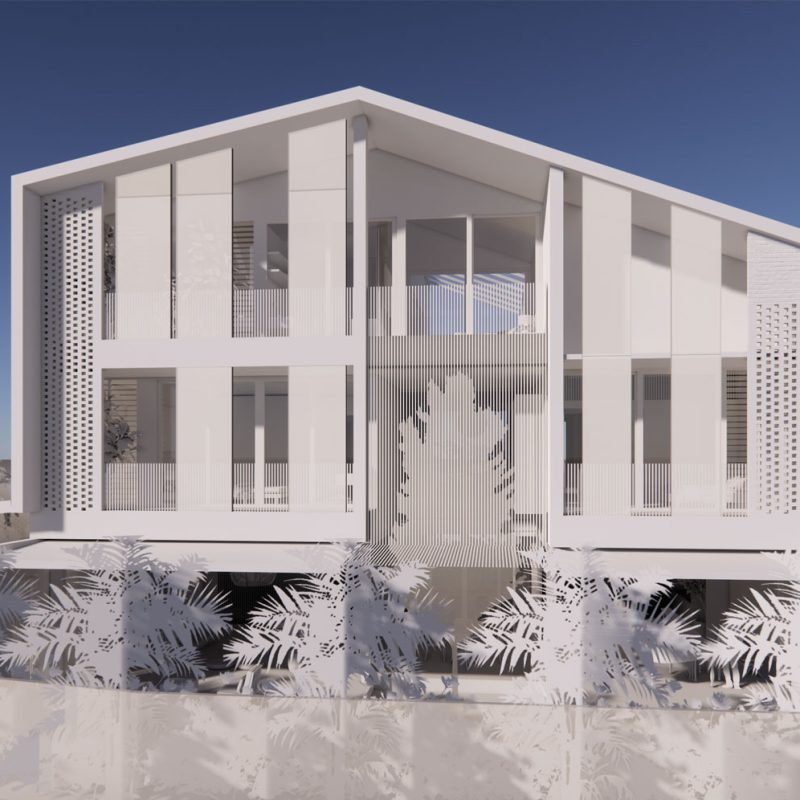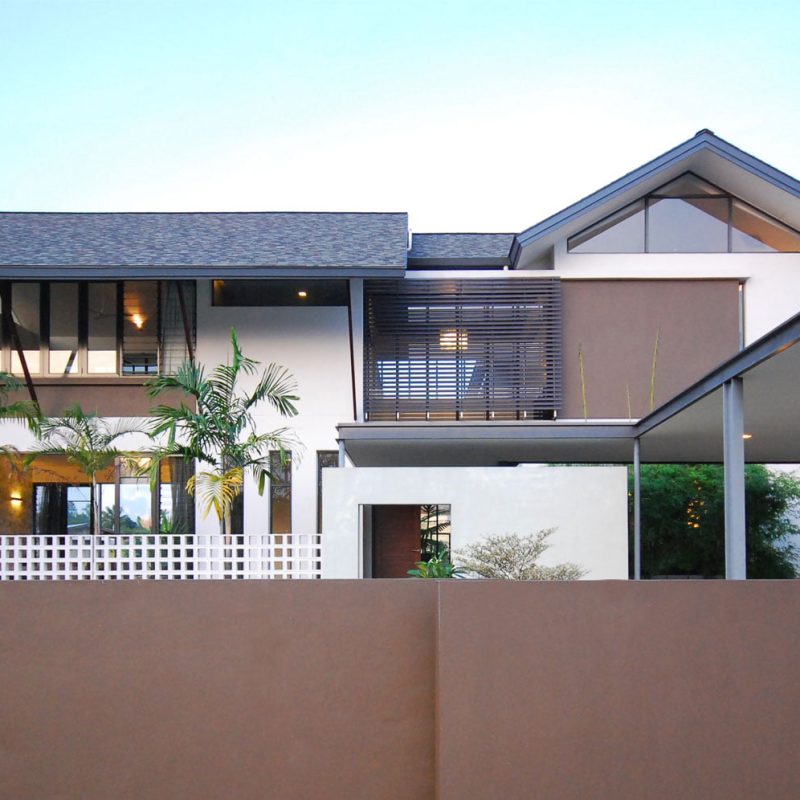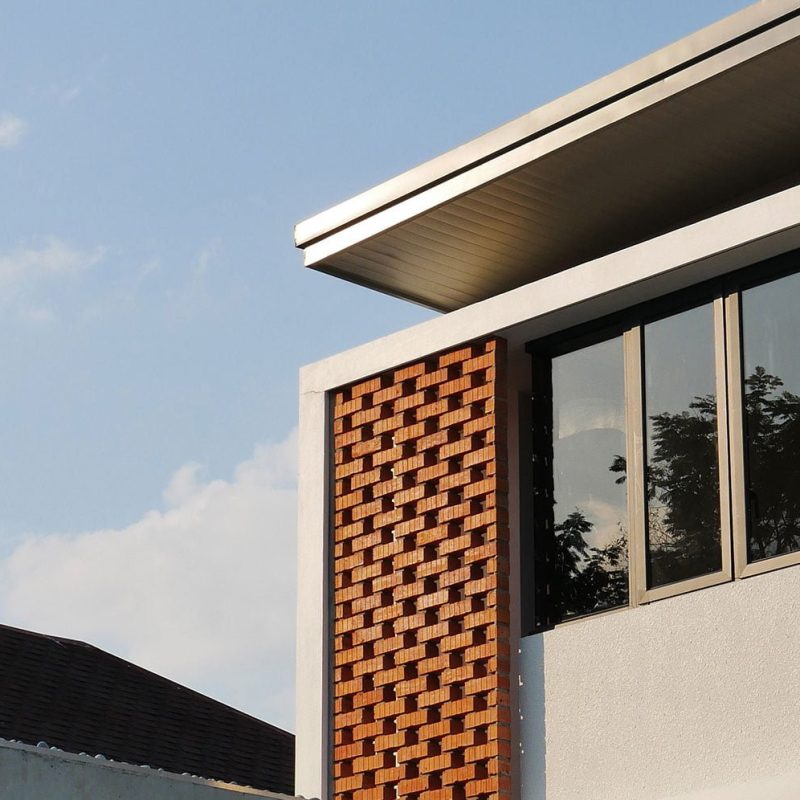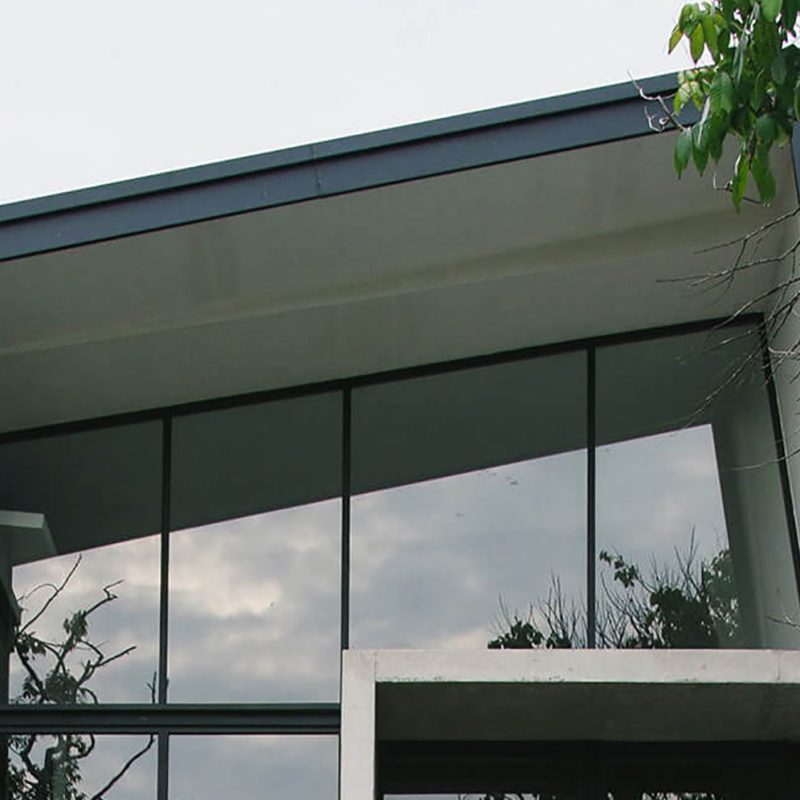Location
- Malaysia
City
- Kuching | Sarawak
Duration
- 2013 – 2018
Client
- Undisclosed
Surface
- Site area
- : 0.28 acre
- Building area
- : 317.52 m2
- Building height
- : 7 m | 2 storeys
Status
- Completed
Project Type
- Residential
Themes
- Single Residential
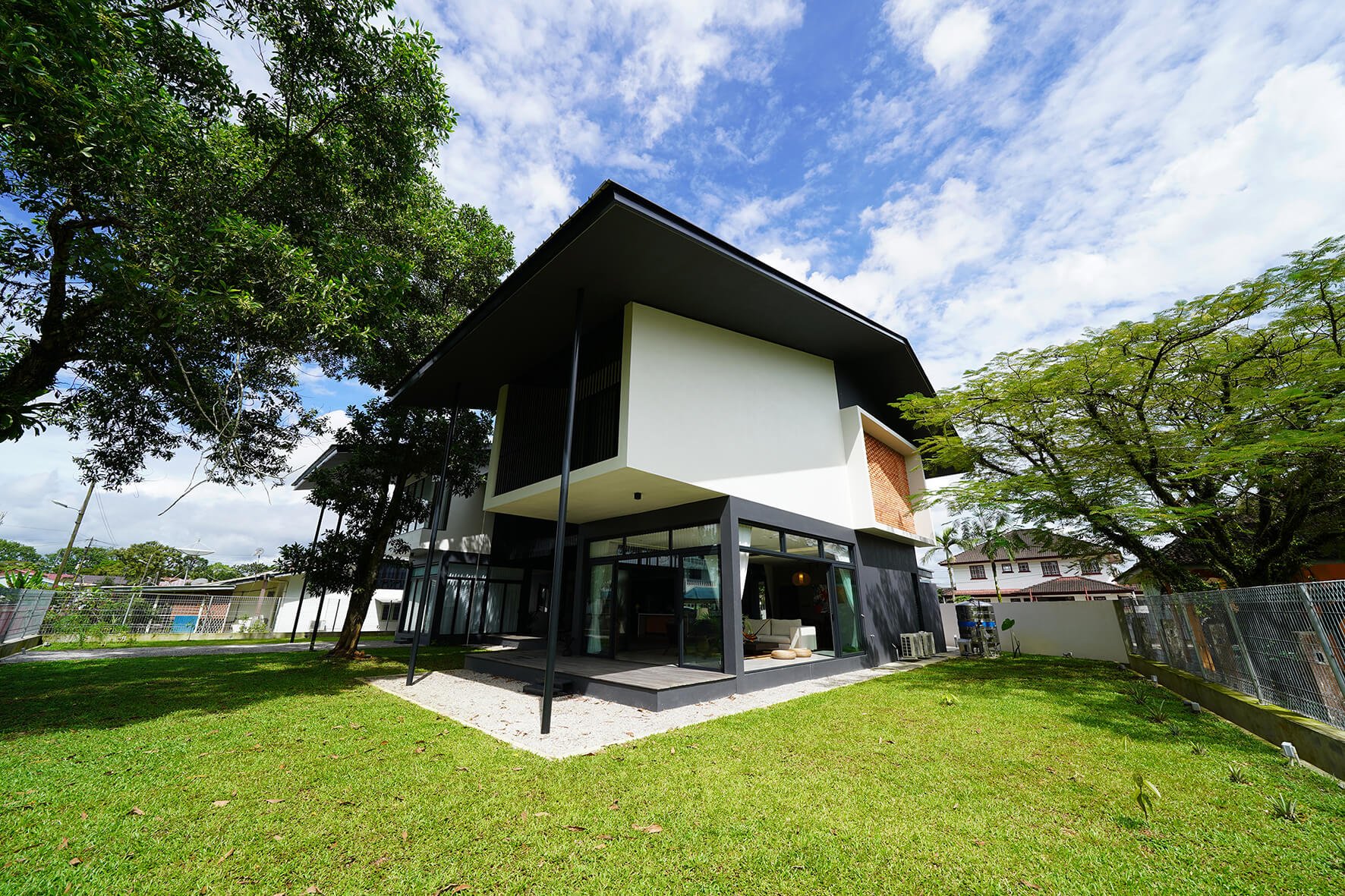
The Keranji House is a small bungalow sited along Lorong Keranji 6, Tabuan Jaya; a well-established residential area in suburban Kuching. The land also sits on the bank of Sungai Tabuan, a river that meanders through this lively neighbourhood of dense housing and commercial enclaves.
The owners, a well-travelled couple from Kuala Lumpur with two grown children, had purchased the plot for the love of being close to water and the presence of mature trees that were thriving there. The family loved nature and saw great potential in this small green quarter-acre patch.
We were approached to design a small and simple house that could capture the essence of the site and be a home where they could connect with their green surroundings. This was to be a retreat for their family and a haven their extended family of rescued cats and dogs. They had an appreciation for what was natural, honest and embraced the idea of openness.
The design approach was driven by these wishes. We believe that when designing a private house, we are charged with the responsibility of interpreting our client’s dreams and desires for an ideal that is deep set in all of us; everyone a little different, the dream springing from a place of love, safety, comfort, delight and happiness. The house become a physical manifestation of the owner’s dreams and desires and therefore affects the lives that dwell in it. Designing a home should never be something to be taken lightly.
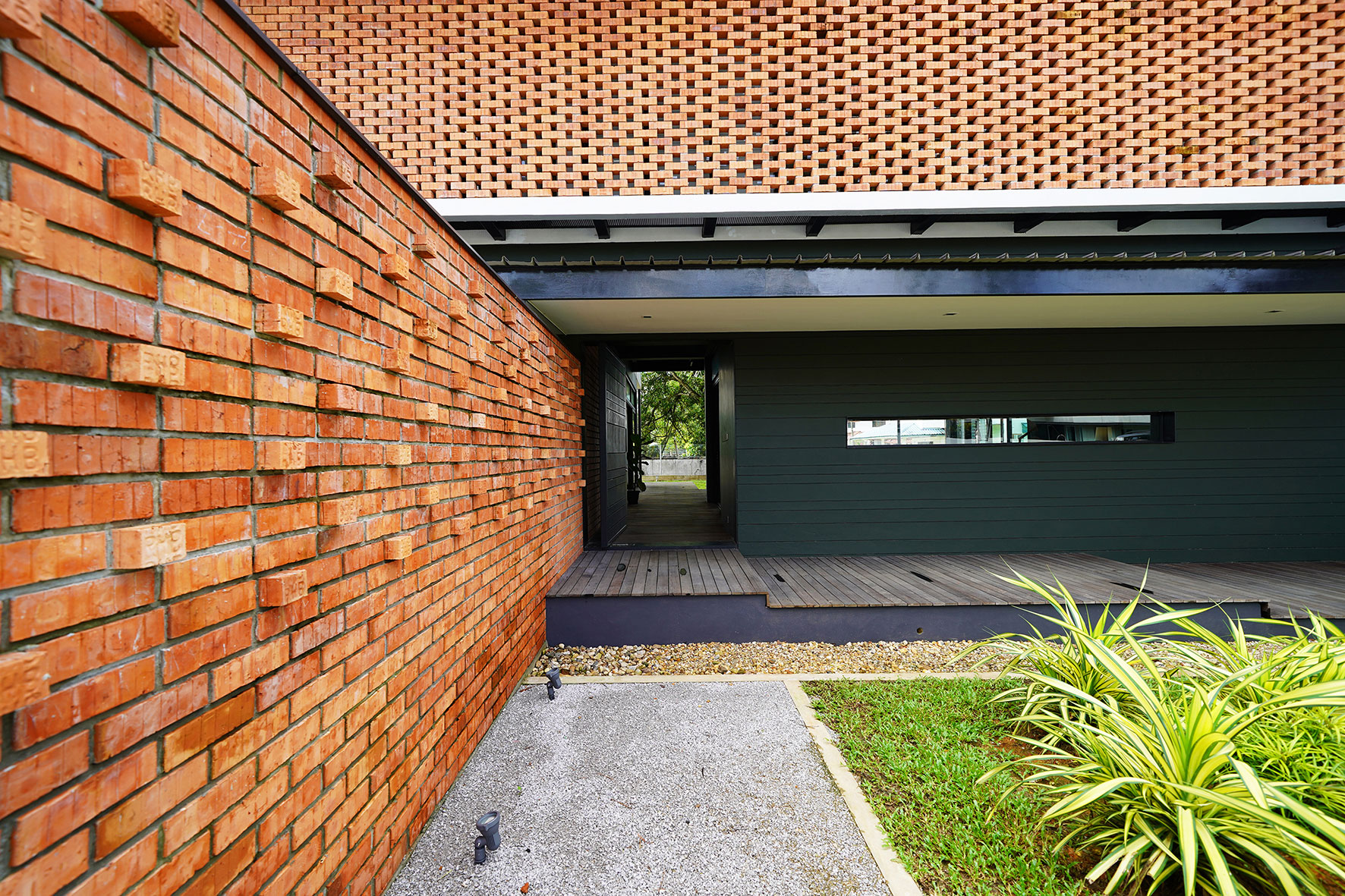

The response to the site was clear from the beginning. The four large existing acacia trees had to be kept and they became pivotal to the whole design; one tree in front, one in the middle and two at the back. Naturally, we decided that the house should have a more reserved and formal frontage towards the street and then open up and embrace the existing garden and trees at the back.
On approach, a veil of laced bricks hovers over a reserved front; a mask from which one could privately peer out from. As one passes this threshold, led by two intersecting walls or spines, the home immediately softens, opens up, and embraces her people into the soul of the house; the garden
As mentioned, the four acacia trees dictated how the house was to be planned. Adopting a north-south orientation, the building was designed around these trees; one marking the entrance and the others forming the courtyard beyond where the house was sculptured around. Private spaces were then carefully organised into two double-storey pavilions, centrally linked, all over-looking the courtyard.
The first pavilion, the Master Pavilion, houses the formal living and dining on ground floor and the master-suite on first floor. This is to also serve as the future master wing, with the client intending to turn the lower living/dining into their bedroom during their golden years. The second pavilion, the Guest Pavilion, houses a personal study on ground floor and two bedrooms for their two visiting children or guests on first floor.
These two pavilions are then connected through shared soft breathable links of shaded terraces, open walkways and galleries on all levels. One is intentionally made to step into these shared spaces when transitioning out from one’s private domains. This is where family members and friends meet to gather, to connect, to play, to eat, to feast and to relax. Naturally, here lies the heart of the house; a central double-volume kitchen with a ‘floating’ staircase, flanked by open decks on two floors. All are welcomed here, including the natural elements … rain, wind or sun.
The Keranji House applies tropical design principles consistently in all areas of the design. Deep roof overhangs over the pavilions and generous terraces around the living spaces provide effective shade from the sun. The use of louvres horizontally or vertically above all glazed fenestrations and continuously behind the breathable front laced brick skin invites breezes and provides constant air movement and ventilation throughout the whole house. The placement of the two lower entrances connecting the central double-volume spaces has additionally created a wind tunnel at the terraces, something which the owners have expressed delight over when relaxing there. The house is air-conditioning free except for the bedrooms.
The project was successfully completed within a relatively small budget. We managed this by maximising the use of local materials while making the design program and materials work harder. This included employing locally produced tiles, red bricks, concrete blocks, stones, etc. which were then expressed in their natural state as much as possible. It was about the extraction of Value from everyday material and objects, the appreciation of materials for their colours, textures and structural characteristics. No extravagance; materials simply used differently.
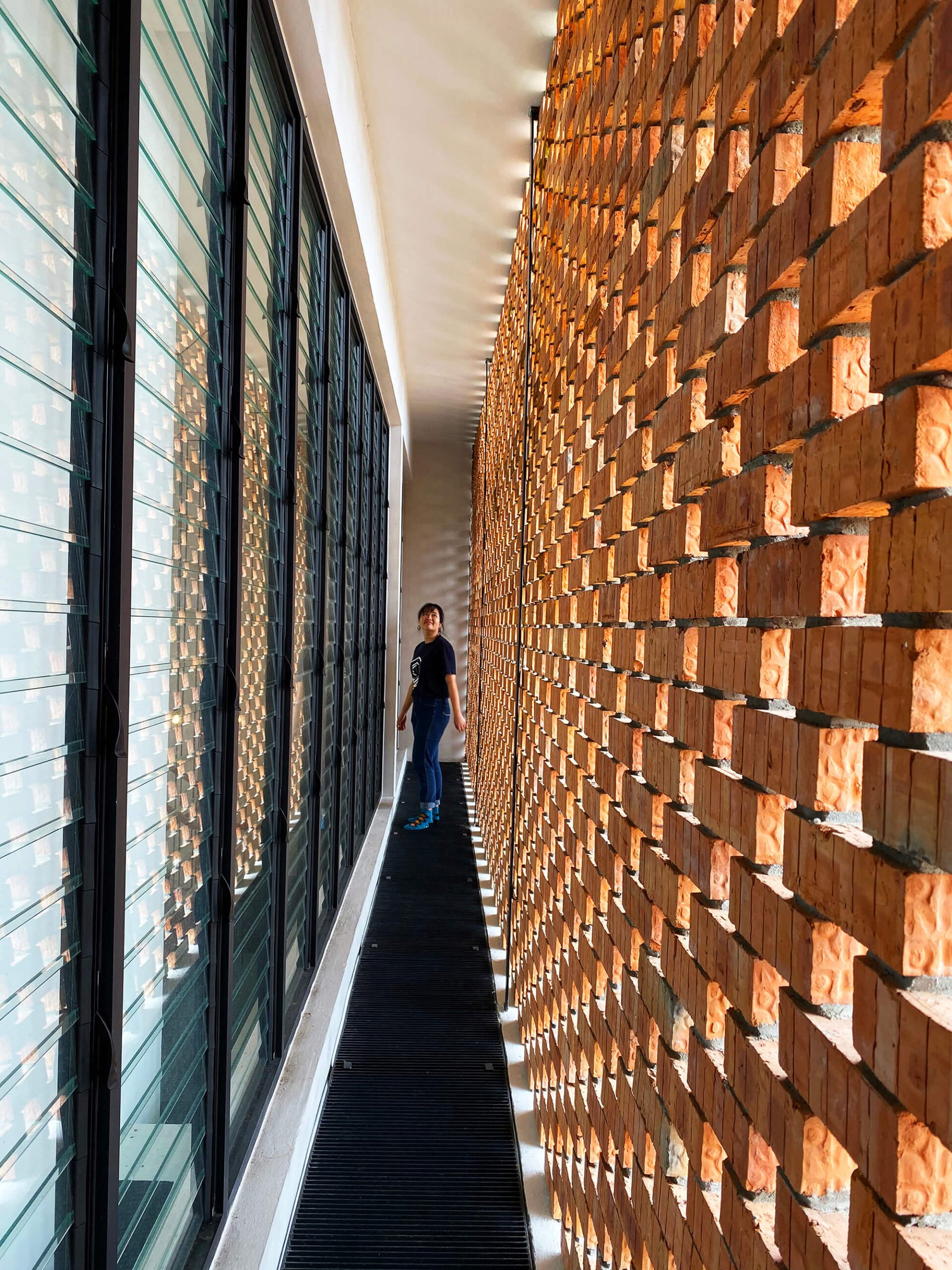

The Keranji house reflects the essence of tropical living. It shades, it breathes, it welcomes the outside in and embraces the elements. Permeability is expressed consistently through a play of laced bricks, concrete blocks, steel screens, timber and glass; Permeable to the elements, permeable to the residents.
Team Credits
Architect
- SML Architects
Engineer
- C & S : Perunding J.L. Maju
Design Team
- Arlene Chew
- Lim Seow Liang
Publications
Awards
- Shortlisted | PAM Awards 2022 | Single Residential
Share our project
